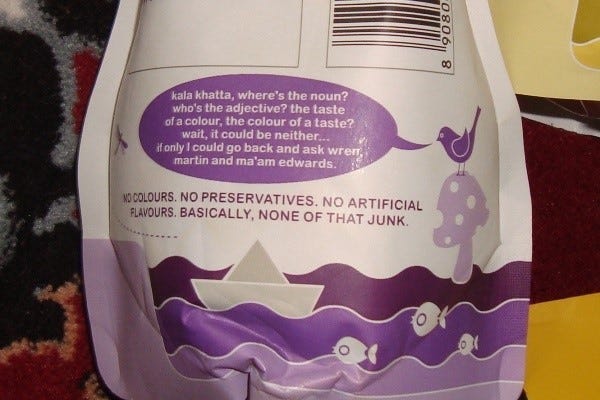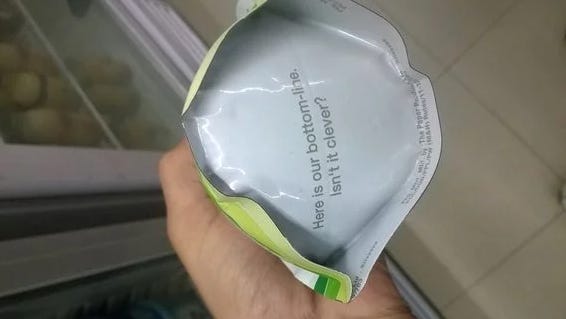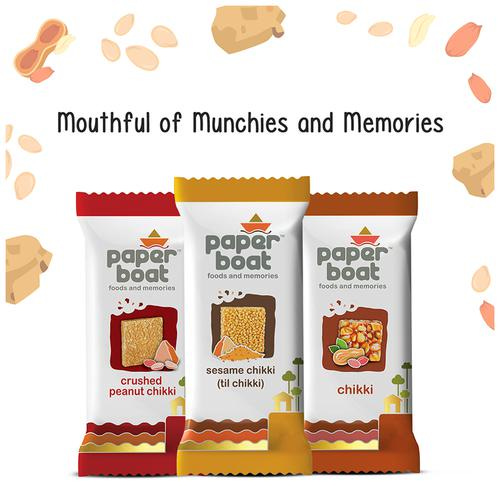The year is 2010. You have just returned from a 4-hour game of cricket in a nearby ground in the scorching heat of the sun. You quickly open the fridge and gulp down the last remnants of the homemade ‘aam panna’ from a plastic bottle where it’s been stored for a couple of days. Now, hold on to this memory.
In India, drinks are an inherent part of our culture. The roadside fruit juice stalls, gobbling down cola after an intense football match during the summer, welcoming guests with Rasna and Frooti – it's in our DNA. A delicious meal is incomplete without a beverage beside it.
In fact, in the world of FMCG food and beverages in India, the competition is fierce, especially in the packaged drinks sector. You've got giants like Coca-Cola and Dabur, offering everything from sodas to fruit juices, while others specialize in drinks like Appy for apple fans and Slice for mango lovers. It's like a battlefield of refreshments!
Starting a new company here might sound crazy, right? But in 2013, Paper Boat took the plunge, challenging the big players and shaking things up in the industry. And not only this, in 2023 it surpassed 500 crore in revenue!
The Birth of Paper Boat
You might be thinking why introduce another drink brand when there are already so many existing beverages?
But Paper Boat was founded to fill an existing gap in the market. What gap, you may ask?
The genesis of Paper Boat occurred when one of the founders realized that no one was serving authentic Indian traditional beverages like Aam Panna, Kalakhatta, Kanji, and Jal Jeera, which are commonly enjoyed in Indian households. Think about it, at that time most companies either produced fruit juices like apple or orange etc, or carbonated drinks like Pepsi, Sprite, or Limca.
So, when they conceived the idea of Indian traditional beverages, they didn't just aim for you to taste a drink but to "Make people taste memories."
Very strategically, they initially launched only two flavors: Aam Panna and Jaljeera, both familiar to most people. These were followed by Jamun, Kalakhatta, Aam Ras, Kokum, Golgappe ka Pani, and Imli, among others, to evoke those early memories and remind consumers of their youthfulness.
The cherry on top was that Paper Boat uses traditional Indian ingredients and does not incorporate any preservatives. Each drink they produce offers some functional benefits, making them not only tasty but also healthy compared to carbonated drinks.
The Branding
Paper Boat has built its entire brand around childhood memories. If you think about it, everything – from its name, tagline, to its flavors – revolves around nostalgia, childhood, and innocence.
The story behind the name:
PaperBoat, the brand name, evokes the memory of making paper boats and trying to sail them in collected rainwater. It was probably one of the either two things any kid made when given a piece of paper, along with paper airplanes. The tagline ‘Drinks & Memories’ too is designed to reconnect customers to their youth and childhood.
Nostalgic Advertising:
From the very beginning, they have deliberately created the brand image of childhood nostalgia through a series of basic, emotive commercials for PaperBoat’s television advertising campaign. The music from RK Narayan’s iconic Malgudi Days was used to compose and perform the ads. Gulzar, India’s renowned poet and lyricist, wrote the first campaign. In addition to its television commercials, the brand has also published short films to commemorate memories and nostalgia.
Packaging
While most companies use cans or tetrapacks to sell packaged drinks, Paper Boat invested significant time and effort in selecting the ideal packaging for their product. They innovated by packaging its drinks in squishy pouches. These pouches are not only easy to carry but also contribute to the brand's appeal, especially in urban India.
Though the pouches are not recyclable, they have a 10% lower carbon footprint and generally lower overall environmental impact compared to glass, tetra packs, or PET bottles.
Additionally, they are lighter and more compact, helping the company save on transportation fuel costs.
Fun tidbit: The pouches feature fun text written at the bottom, complementing the brand's vibrant colors, funky fonts, and graphics in their packaging.
What's Next?
Hector’s PaperBoat range of drinks currently accounts for 75% of its sales, making it one of the few home-grown beverage brands to taste success. Now, they are venturing into snacks, focusing on traditional Indian snacks like chikki, peanut bars, aam papad and dry fruits. But by entering the healthy snack industry, can PaperBoat make a mark here too?
Product Insight🧠
Zepto recently introduced its loyalty program, Zepto Pass, following in the footsteps of Zomato Gold and Swiggy One. But what distinguishes Zepto Pass and makes it a preferable choice?
Pricing Advantage 💸
Zepto Pass's introductory offer is ₹39 per month, compared to Swiggy One's introductory offer of ₹299 for 3 months and Zomato Gold's ₹149 for 3 months. This means that Zepto Pass for 3 months is the cheapest among all of them.
However, post the introductory offer, Swiggy One is priced at a regular ₹899 for 3 months, and Zomato Gold is priced at a regular ₹999 for 3 months.
Benefit Distinction 🤝
Zepto offers unlimited free deliveries for orders above ₹99 and provides up to 20% off on orders exceeding ₹399.
Swiggy One ensures unlimited free deliveries on Restaurant orders (within a 10km radius with AOV > ₹149) and extends the same benefit to Instamart orders above ₹199.
Zomato Gold, while lacking Blinkit-related benefits, grants free delivery on Restaurant orders (within a 10km radius with AOV > ₹199), coupled with DineOut benefits & Zomato Legends, an intercity program.
For those who heavily use Quick Commerce and sporadically dine out, Zepto emerges as a compelling choice, offering a lower membership fee, a reduced free delivery threshold, and potential discounts.
In a nutshell, despite joining the party later, Zepto provides a well-crafted and unique option. What do you think users will lean more towards?






